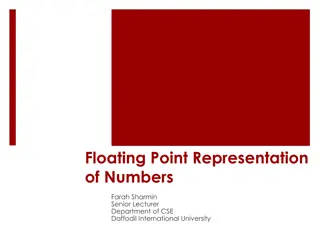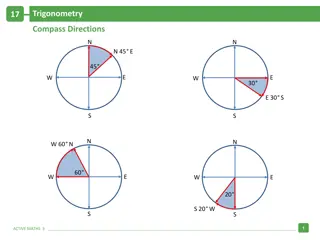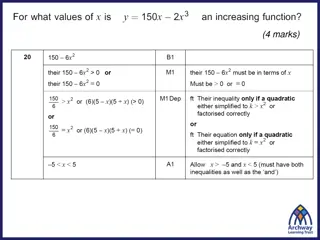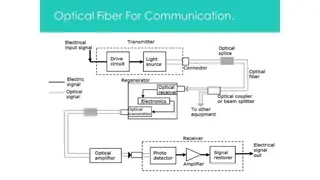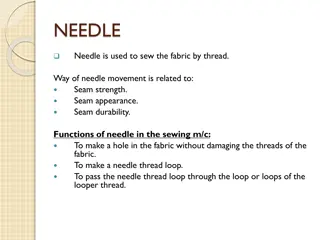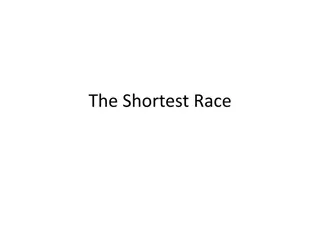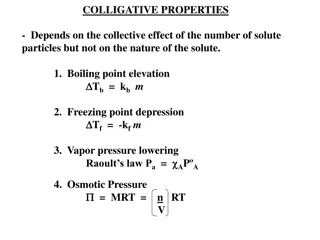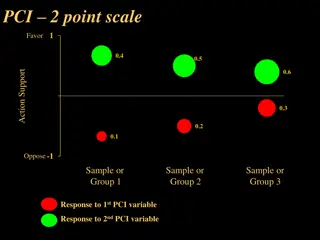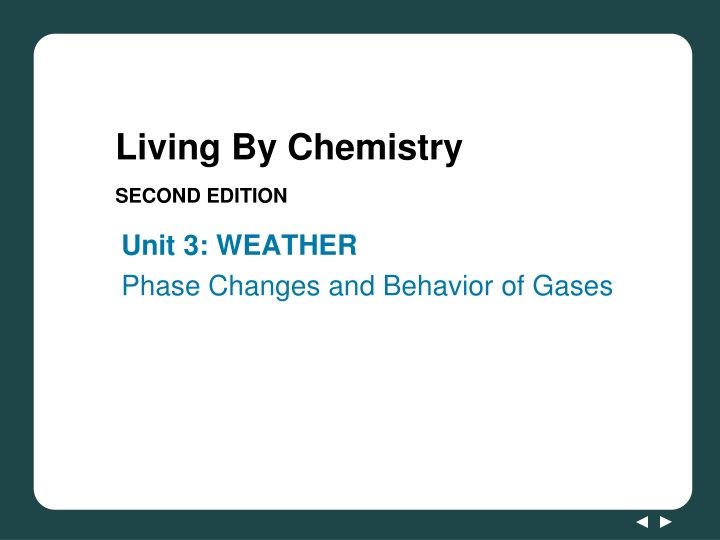
Gas Behavior and Pressure in Chemistry
Explore the molecular view of pressure, gas laws, and the behavior of gas particles in this educational unit focused on phase changes and the properties of gases. Discover how gas pressure is influenced by molecular collisions and temperature changes.
Download Presentation

Please find below an Image/Link to download the presentation.
The content on the website is provided AS IS for your information and personal use only. It may not be sold, licensed, or shared on other websites without obtaining consent from the author. If you encounter any issues during the download, it is possible that the publisher has removed the file from their server.
You are allowed to download the files provided on this website for personal or commercial use, subject to the condition that they are used lawfully. All files are the property of their respective owners.
The content on the website is provided AS IS for your information and personal use only. It may not be sold, licensed, or shared on other websites without obtaining consent from the author.
E N D
Presentation Transcript
Living By Chemistry SECOND EDITION Unit 3: WEATHER Phase Changes and Behavior of Gases
Lesson 60: Be the Molecule Molecular View of Pressure
ChemCatalyst Consider three balloons: one filled with sand, a second filled with water, and a third filled with air. 1. Describe at least three differences between the balloon containing air and the balloons containing sand and water. 2. What are the individual gas molecules doing inside the balloon containing air to make it big and round?
Key Question How do molecules cause gas pressure?
You will be able to: describe the motions of gas particles under changing conditions explain changes in pressure, volume, and temperature based on the motions of molecules
Prepare for the Simulation Work as a whole class.
Discussion Notes The gas laws allow you to calculate new values for gas temperature, pressure, and volume when two of these conditions change.
Discussion Notes (cont.) Charles s law: V = kT, k = V/T. Pressure and amount of gas do not change. Gay-Lussac s law: P = kT, k = P/T. Volume and amount of gas do not change. Boyle s law: P = k (1/V), k = PV. Temperature and amount of gas do not change. Keep in mind that Charles s law and Gay-Lussac s law are proportional relationships: V = kT and P = kT. In the kinetic theory of gasses, the gas molecules are in constant motion.
Wrap Up How do molecules cause gas pressure? On a molecular level, gas pressure is a result of gas molecules striking the walls of a container or an object. Pressure increases as the frequency of collisions increases. It also increases if the molecules hit the walls with greater force. Pressure and temperature are proportional if the volume of the gas does not change: P = kT. An increase in temperature increases both the collision frequency and the force with which the molecules hit the walls.
Wrap Up (cont.) Pressure and volume are inversely proportional if the temperature does not change: P = k (1/V). A decrease in volume increases the frequency of collisions.
Check-In A family went for a drive in the desert. In the morning, the air pressure in the tires of their car was around 28 lb/in2. In the afternoon, the tire pressure was around 32 lb/in2. Provide an explanation on the molecular level for why this happened.





